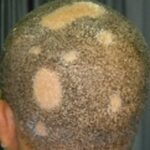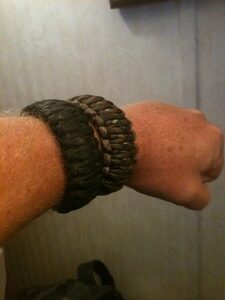Yorkshire Terriers, or Yorkies, are becoming ever more popular nowadays. It appears that just about everyone has at least one. But, even though these tiny dogs are so popular and they are usually considered at healthy breed, there are several health concerns that have been reported.
Alopecia is a condition where the Yorkie experiences hair loss in areas where there should be hair on the dog’s body.
Aseptic Necrosis occurs when the Yorkie’s femoral head, which is the highest part of the thigh bone, progressively deteriorates and collapses. Unfortunately there is no known cause for this condition at this time
Atlantoaxial Subluxation occurs when the two cervical vertebrae in the Yorkie’s neck are not attached firmly. This is usually caused when the Yorkie is born without the ligament support is a condition in which the first two cervical (neck) vertebrae are not firmly attached. Dogs are born without ligament support to their atlantoaxial joint, which is the joint where these two cervical vertebrae meet.
Cataracts are eye problems that can be either in one eye or in both eyes and can lead to the Yorkie becoming blind. This eye condition occurs when the Yorkie suffers a loss “of the normal transparency of the lens of the eye.
Congenital Elbow Luxation in Yorkies occurs when the elbow joint is dislocated.
Cryptorchidism occurs when a male Yorkie has one or both testicles that do not “drop” or descend properly into the dog’s scrotum.
Dwarfism occurs when a Yorkie has a body structure that is abnormally small. Usually there will be some skeletal deformity and/or body proportions that are altered.
Dystocia occurs when a female Yorkie has difficulty delivering a litter of puppies.
Entropion is a condition where the Yorkie’s eyelid rolls inward causing the Yorkie’s lashes to irritate the eyeball and can lead to the Yorkie having more eye problems.
Hemorrhagic Gastroenteritis in Yorkies is disease syndrome that is characterized by bloody diarrhea that occurs sudden and can often times be very explosive.
Hepatic Lipidosis is a fatty liver disease in Yorkies that is characterized by the lipids that are accumulated in excessive amounts within the Yorkie’s liver cells. This disease is generally seen in Yorkie puppies.
Hydrocephallus, a neurological disease, occurs when there is cerebrospinal fluid excessively accumulated in the ventricular system of the Yorkie’s brain.
Hypoglycemia occurs when the Yorkie’s blood sugar drops.
Keratoconjunctivitis sicca occurs when the Yorkie’s eye does not produce adequate tears.
Mediall Patellar Luxation occurs when the Yorkie has a disorder that affects its kneecap.
Patent Ductus Arteriosus, a blood vessel that joins the Yorkie’s aorta with the pulmonary artery, can cause a health condition when it stays open after birth of the Yorkie.
Portosystemic shunt occurs when the Yorkie’s “blood is shunted away from the liver.” This results in blood toxins accumulating and making the Yorkie sick.
Progressive Retinal Degeneration occurs when a Yorkie’s nerve cells located at the back of its eye degenerates which can lead to blindness in the eye.
Testicular tumors occur in male Yorkies that remain intact and involve tumors in the testicles.
Tracheal Collapse occurs when the Yorkie’s windpipe rings becomes weak and can lead to coughing and irritation.
Urolithiasis occurs when the Yorkie has bladder stones form in its urinary tract.
Potential Yorkie owners should know that not all Yorkies are prone to these conditions. Some Yorkies will live a long and full life and never be ill. Hopefully that is the type of Yorkie you will have in your life.




